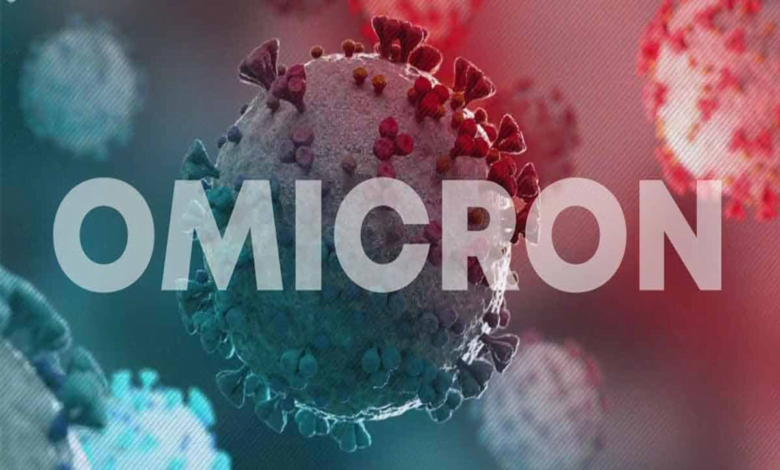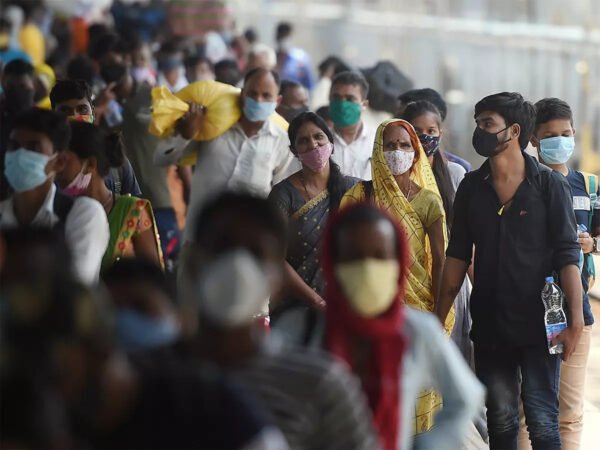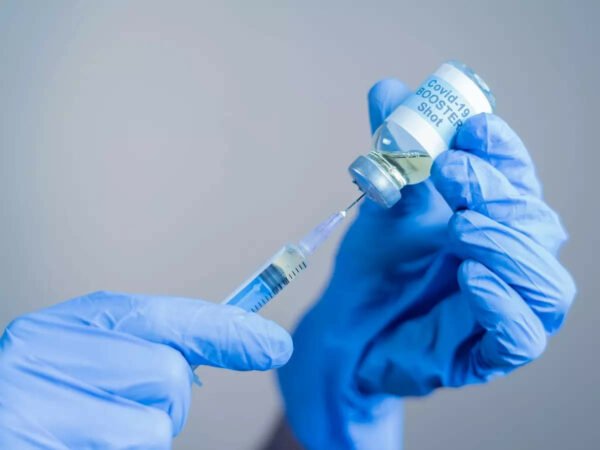What Should You Know About New Omicron Subvariants?

Recently, experimenters have honored various new Omicron sub variants of SARS-CoV-2. First seen in South Africa and the United States, the sub variants — BA.4, BA.2.12.1, and BA.5 — have driven new increases in cases in the two countries.
The new variants of Omicron are far and down superior at sidestepping the insurance presented by antibodies, a once complaint, or a blend of the two. Up to this point, it’s foggy whether the new sub variants will drive a shaft in cases overall as their ancestors, the Omicron BA.1 and subsequently BA.2 strains, did this former downtime and spring, independently.
Penny Moore, a virologist at the University of the Witwatersrand in Johannesburg, South Africa, stated that they are clearly entering a rejuvenescence in South Africa, and it is entirely driven by BA.4 and BA.5″. She went on to say that people are witnessing an unprecedented number of conditions. Six people have been killed inside her lab.
According to Science, BA.4 and BA.5 first appeared in South Africa in early January, but have lately caused a significant increase in cases, with the number of cases adding 10-fold (from to daily reported cases) between April 17 and May 7. In April, experimenters in New York linked Omicron subvariant BA.2.12.1. Since then, it has spread throughout the United States.
In general, inoculation or earlier impurity appear to give protection against serious illness caused by the sub variants. “There is no great explanation to go ballistic, “immunologist John Moore of Weill Cornell Medicine tells Science. While he admits that the new strains are” a fresh problem, “he adds that” there’s no suggestion that they are more perilous or pathogenic” than former types of Omicron.
According to the science, the new sub-variants may complicate antibody generators’ sweats to carry out variation unequivocal shots. Despite the fact that the number of conditions and hospitalizations caused by variations is increasing in South Africa and the United States, scientists believe that the surges of impurity caused by unequivocal variations may be getting more predictable, according to STAT.
We are familiar with the following Omicron variants:

BA.2 is a subvariant.
According to Scientific American, the BA.2 subvariant was discovered in South Africa in November 2021 ( contemporaneously as BA.1) and the United States in January. It snappily surpassed BA.1, the former subvariant of Omicron. BA.2 imparts 32 changes to BA.1 that distinguish it from heritable SARS-CoV-2 infection, but it also imparts 28 different metamorphoses that distinguish it from BA.1, remembering for the receptor confining space that ties to have cells.
BA.2, also known as “covertness Omicron” because it’s more delicate to distinguish using standard PCR tests, was generally1.5 times further contagious than the first variant. By mid-April, BA.2 had addressed nearly 90% of cases in the US while avoiding a major outbreak, owing to the insurance handed by former BA.1 as indicated by New York Magazine.
Sub Variants BA.2.12 and BA.2.12.1
These new sub variants, discovered in New York, are nearly related to BA.2 but are 25 further contagious, according to US News and World Report. According to CDC data released moment, BA.2.12.1 is responsible for 48 percent of cases in the United States (May 17). According to CNBC, it has been recognized in 23 countries.
Subvariants BA.4 and BA.5
These subvariants surfaced in South Africa in early January and are more contagious than BA.2. Beyond South Africa, these variations are currently at low levels, with only 300 cases of BA.5 and 700 cases of BA.4 linked in 16 and 17 countries, independently, according to CNBC.
The new variants may be better at avoiding conditions and immunization.
A review published as a preprint on medRxiv on May 2 plant that BA.4 and BA.5 are more effective at avoiding host invulnerability than Omicon BA.1, indeed when immunization or impurity with BA.1 is present. South African judges collected blood samples from invested and unvaccinated cases with former BA.1 impurities between November and December 2021. The exemplification antibodies were many times less effective at killing BA.4 or BA.5 than they were at killing the first Omicron strain. Nevertheless, antibodies from invested people were more potent against the new subvariants than those from unvaccinated people who had BA.1 complaint.
Another preprint study published on bioRxiv on May 2 discovered that antibodies from BA.1 cases were less effective in the lab at killing the BA.4, BA.5, and BA.2.12.1 subvariants than they were against BA.1. A Chinese group created duplicates of the Covid shaft protein grounded on the arrangements of the new sub variants for the review and tested how well colorful antibodies could keep the proteins from confining to cells.
Blood samples were collected from 156 immunized and supported subjects, including some who had recovered from either BA.1 or severe acute respiratory pattern (SARS), the Covid infection that caused dangerous flare-ups twenty times ago. According to science, fresh exploration by David Ho at Columbia University in New York City supports these findings. (While Ho has not yet made his group’s information public, he has participated in it with US government officers.)
How the strains avoid being vulnerable?

The bioRxiv preprint focuses on why the new strains might be suitable to avoid the impregnable response presented by former immunization and complaint. The three subvariants — BA.4, BA.5, and BA.2.12.1 — have amino sharp L452 metamorphoses, which are important for the Covid’s receptor- confining area, the piece of the shaft protein that helps the infection cinch onto and pollute cells. This is also an important target for protective antibodies. “The independent appearance of four altered metamorphoses at an analogous location? That isn’t typical, “Peking University immunologist Yunlong Richard Cao says in Science.
The authors hypothesized that the infection was a response to the increased situations of population resistance caused by immunization and wide Omicron impurity. According to Science, the Delta variant also had significant changes in L452, so numerous experimenters have been keeping a close eye on the area.
According to Ho, the rise of these strains indicates that the Omicron heredity is continuing to foster increased contagiousness.
Creating antibodies to combat variations

The limited protection that BA.1 impurity handed against the new sub variants in lab studies has proactively raised enterprises about how useful new Omicron-unequivocal immunizations being developed by Moderna, Pfizer-BioNTech, and others may be. Linfa Wang, a club Covid master at Singapore’s Duke-NUS Medical School, tells Science that the infection is moving too snappily for strain-specific immunizations to keep up. All differently being equal, he believes that a broad blend of monoclonal antibodies targeting different strains may be the most effective way forward.
Such a treatment could help impurities for a long time in people who are defenceless against severe illness, like immunocompromised people. According to Wang, protecting that collection is critical because many experts believe new variant of coronavirus emerge due to long-term impurities in people whose vulnerable systems fail to clear the infection . Wang asserts that the problem here is cost. Small portion of monoclonal antibodies cost around $ per case,” but if a person could figure out how to reduce that to$ 50 or$ 100,” he believes it would be a more compelling for fighting diseases.
Predicting the next wave of Coronavirus
Experimenters told science that BA.4 and BA.5 are unlikely to cause a new COVID-19 outbreak in Europe or North America, where the strains have been linked — at least not right now. According to Tom Wenseleers, an experimental experimenter at Belgium’s Catholic University of Leuven, the variations are explosively linked to BA.2, which has only which recently started ending its concequences in Europe, so the crowd’s vulnerability may still be high. “It provides a stopgap in the sense that it will have a smaller effect and result in little amount of spreding power in Europe.”
According to science. If SARS-CoV-2 gains its power, it may have an impact on the sporadic and cyclical nature of respiratory illnesses. As new data becomes available, The Covid impurity example may also prove more predictable, as new mutations in the infection exploit sins in population-wide vulnerability, causing intermittent outbreaks of complaint. “It’s presumably what we should expect to see in the future,” Moore tells Nature. Experimenters may improve their ability to forecast how long resistance to COVID-19 will last and when swells will suffice.
“That’s one system for pouring the examples,” says Jesse Bloom, a viral transformative scientist at Seattle’s Fred Hutchinson Cancer Research Center.
“However, I believe we should protect ourselves and be caution when deriving abecedarian principles from an authentically brief perception time span.”
edited and proofread by nikita sharma




